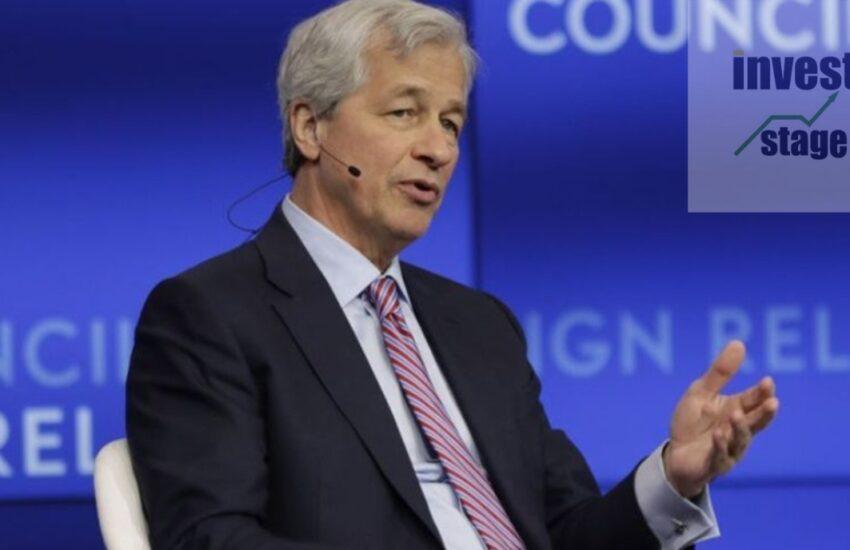Fighting inflation: what else can be done
Nothing is more sobering than a 1,000-point drop in the Dow(Dow Jones).
After a mostly quiet week, Federal Reserve Chairman Jerome Powell generated enough volatility for five days with his speech last Friday. We all knew that the reaction would be violent. True, no one knew in which direction the market would react.
In this case, the market rushed down. And the explanation for this market reaction comes down to five words in Powell’s speech: “until the job is done.” The Fed chairman made it clear that the FOMC is determined to bring inflation down and is not going to turn off course (which markets expected from it in 2023), even if it gets tough.
Or, at least, that’s what he wanted to convey to the market. But I have this question: when is a hole considered dug?
The man is digging a hole. His friend asks how much more to dig. They wanted to go out for a beer. The man replies, “I will dig until the hole is dug.” What does it mean? Can a hole be considered dug when it is deep enough? Wide enough? Deep enough and wide enough for what? Does “digging a hole” also mean cleaning up all the excavated earth? It is simply impossible to answer. “Until the job is done” is one of those phrases you might hear from your dad while doing chores around the house on his behalf. This is not an instruction. This is instruction.
“Keep digging. I’ll tell you when it’s time to stop.”
When can one speak of “completed work” in the context of inflation? When does the annual CPI plateau at 2.25%? When does the core CPI first reach 2.0%? When did headline inflation slow down from its high by at least 2%? Or the rate of core inflation? The indefinite expression “until the work is completed” can be put on a par with the indefinite word “transitory.” They have no meaning until they are specifically defined.
Frankly, I’m not sure that the Fed itself knows when it will be possible to talk about completed work. Powell seemed to be trying to hint, but his hints were no more specific. For example:
“The second conclusion is that public expectations about future inflation can play an important role in shaping the path of inflation over time. Today, by many measures, long-term inflation expectations seem to be well anchored. This is generally true for surveys of households, businesses and economists, as well as for market indicators. But this is no reason for complacency, given that inflation has been well above our target for some time now.”
This is an interesting passage, because its content is simply not true. Moreover, over the past year, some experts and officials, including those in the Fed’s Board of Governors, have acknowledged this. The notion that inflation expectations matter was most convincingly debunked in a September op-ed by Jeremy B. Rudd of the Fed’s Board of Governors.
3“Based on a review of the current theoretical and empirical literature, it is concluded that this view is based on extremely shaky foundations, and it is argued that blind adherence to it can easily lead to errors in decision making.”
So what does this representation do in Powell’s speech? Unfortunately, the Fed chairman actually admits that the central bank still relies on mean reversion models (the mean reversion model is largely based on the belief that inflation will return to expected levels over time) when he states: “ If the public expects inflation to remain low and stable over time, then it probably will, provided there are no major shocks.”
Again, as the documents cited in Rudd’s article (and I’ve been talking about for years) convincingly state, the evidence for this view is very unreliable.
However, the inclusion of this phrase in the speech creates a loophole for the Fed. They don’t have to wait for inflation to come down completely before they can announce a ‘shutdown’. A sufficient deceleration of inflation, combined with “anchored expectations”, is likely to be enough to stop raising rates.
Many commentators in the media liked Powell’s “reading” of Clubber Lang’s words from Rocky 3: “…higher interest rates, slower growth and easing labor market conditions are helping to reduce inflation. They will also hurt households and businesses.” True, his next phrase really deserved a place in the news: “We are taking decisive and prompt steps to limit demand in order to ensure its better correlation with supply.”
This implies that the Fed will respond to the recession, as that is what will be done to “ensure a better balance between supply and demand.” That’s what they’ve been saying for the last couple of weeks, they supposedly don’t care.
So for now, we know they will continue to tighten monetary policy until the job is done. Whatever that means.
Big Picture
The problem with inflation is, of course, not too high inflation expectations or supply constraints. The biggest problem is that the money supply (M2) is now 41% higher than it was at the end of 2019, while the price level is only 15% higher.
Unless the velocity of money remains perpetually disturbed, this difference must be offset by either incredible real growth (an unlikely scenario) or a much higher price level.
Or the Fed needs to cut not money growth (which has dropped to about 1% over the past few months, although bank lending continues to grow at a rate of 10%), but money supply. In principle, they can achieve this if they continue to reduce the balance sheet through quantitative tightening for years.
The problem is that in this case they will withdraw liquidity from the system – not only monetary liquidity, but also transactional liquidity. One of the highlights of Friday’s market crash for me was the rather low volume. A fall of 3-4% would normally be accompanied by a sharp increase in volumes. However, last Friday trading volume was lower than the previous Friday.
The chart below shows the NYSE Composite Index in millions of shares. You would not even think that something remarkable happened last Friday.

According to technical analysts, volume adds weight to the price signal. A pullback or rally on low volumes carries less weight than on high volumes. Perhaps that is the way it is. However, such a large shift at low volumes also means that liquidity has been very poor. It takes a lot of “power” to move the market 3%, but on Friday it didn’t.
We have not yet seen such manifestations of low liquidity in the stock market, but in the fixed income market they have been multiplying for some time now. On my last chart, the black curve is the government’s liquidity index (higher numbers mean lower liquidity) versus the Fed’s balance sheet (inverted blue curve). In the place where the balance reached its peak, I drew a thick red line.
All this does not necessarily mean that it will become completely impossible to trade due to the continued reduction in the balance sheet. However, if the apparent relationship between balance sheet shrinkage and liquidity is sound, then the Fed may have to stop balance sheet shrinkage long before it has a tangible impact on the money supply. And, as I noted above, this means that the aggregate price level will need to reach a much higher value. And he will do this until the work is completed.

Michael Ashton/Market Reviews




